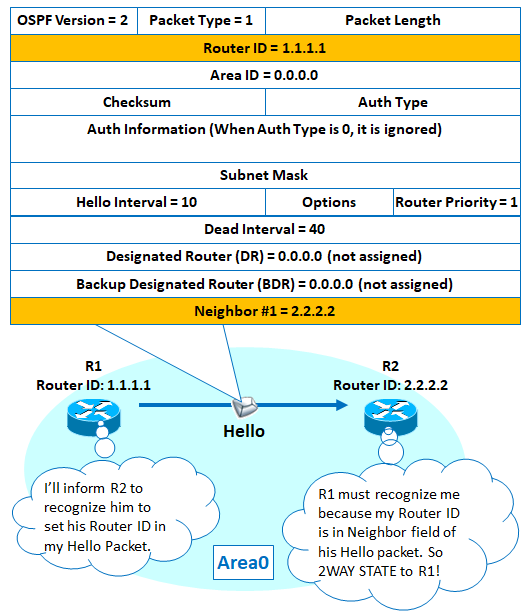What is 2WAY
OSPF routers in the same segment recognize each other by throwing Hello packets to each other, and put the counterpart router ID in the Hello packet that it generates in order to inform the other party of the recognition.This establishes neighbor (neighbor). Neighbor state is also called 2WAY STATE.
In addition, there are adjacencies (adjacency = adjacency relation) with similar words, but the state is different from this.The difference between neighbors and adjacency is whether they are exchanging route information (LSA) or not.When neighbors are not exchanging route information , agency is a state where route information has been exchanged after becoming a neighbor.
DR and BDR become adjuscies via DRother (reading: Dial 's other), but DRother keeps staying in a neighbor relationship.
In the network type that throws Hello by multicast, it spontaneously throws Hello packets with multicast.
On the other hand, in the network type that requires manually specifying the other IP address, Hello packets are not spontaneously thrown without setting, and multicast from the other party or unicast by manually setting the neighbor command (Hello Upon receiving the packet, it throws a Hello packet with unicast.
So in case of both network type (NBMA etc.) that do not spontaneously send multicast, either one is enough, so you need to set the neighbor command.
Conditions for establishing neighbor
In OSPF, the conditions that become neighbors are as follows.
- Same area ID
- The subnet of the output interface is the same
- Hello intervals are the same
- Stub / NSSA flags are the same
- The same authentication information (when authentication is valid)


コメント